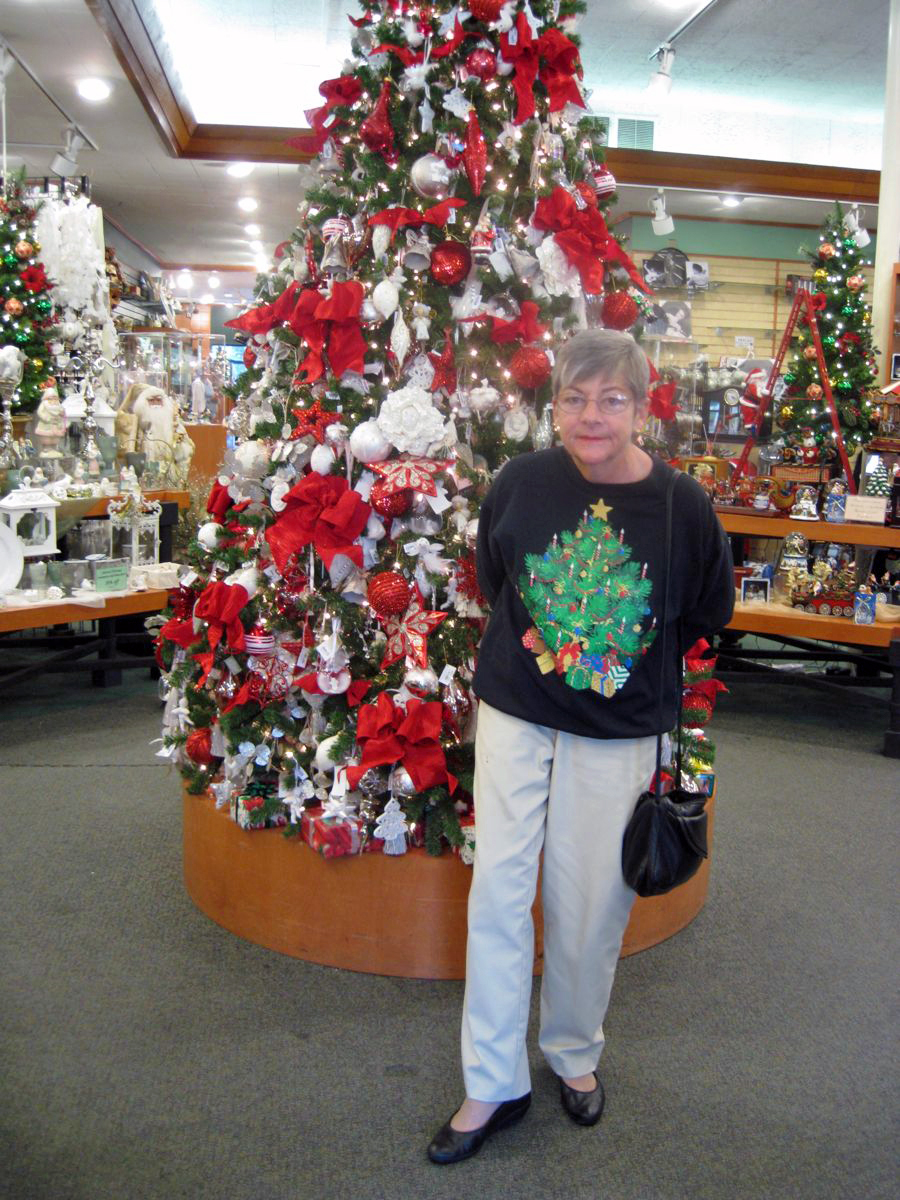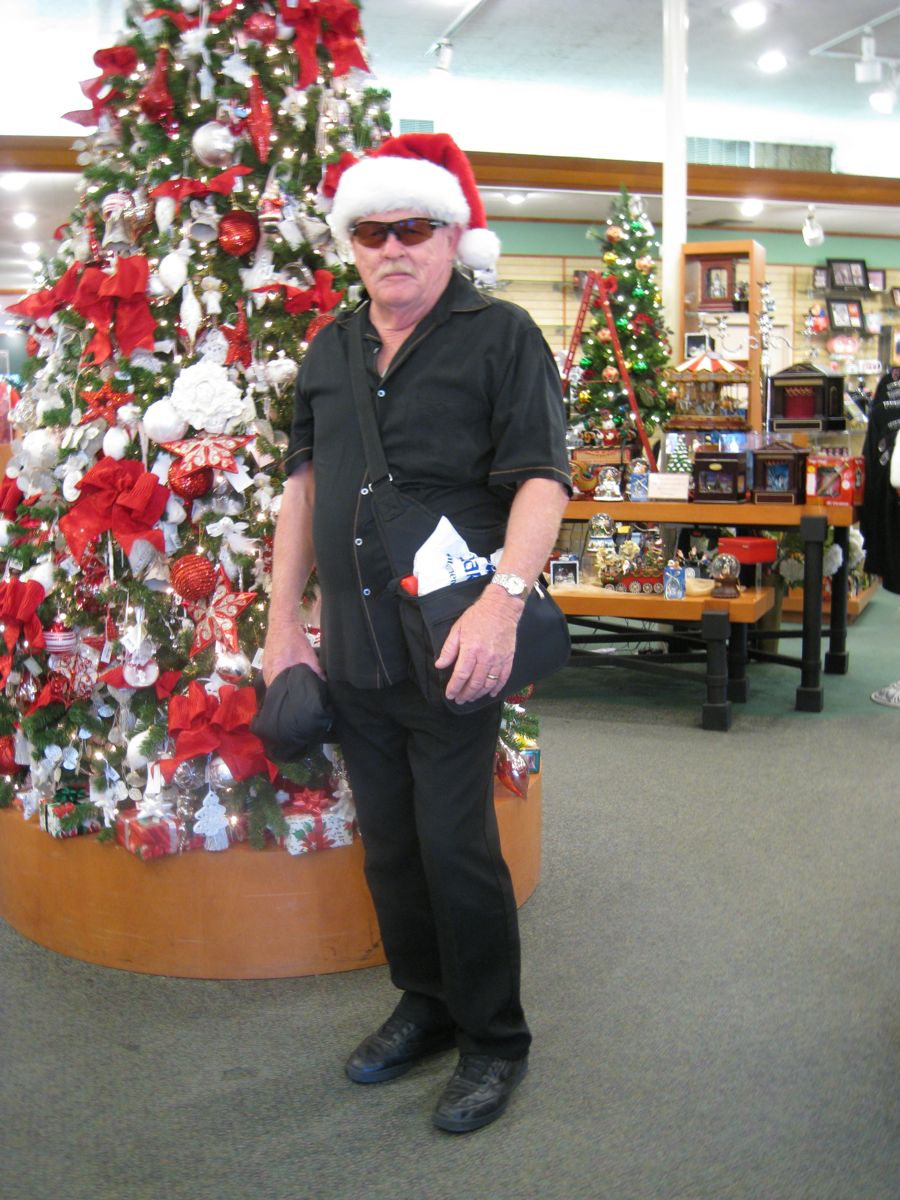To The Arts And Crafts Fair We Go... 12/8/2011
Most years we spend a few hours at the Arts & Crafts Fair to see what creative people are doing these days.
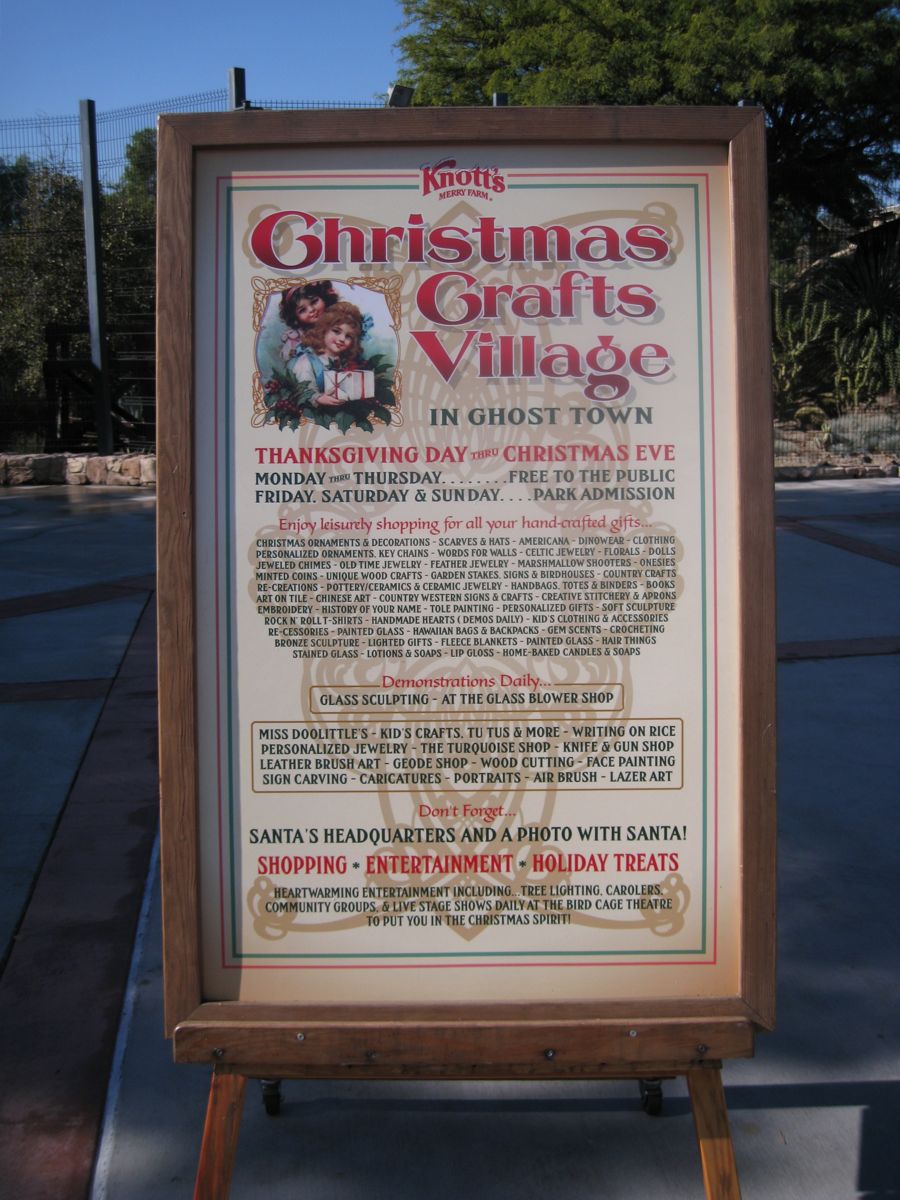
This year admittance was FREE
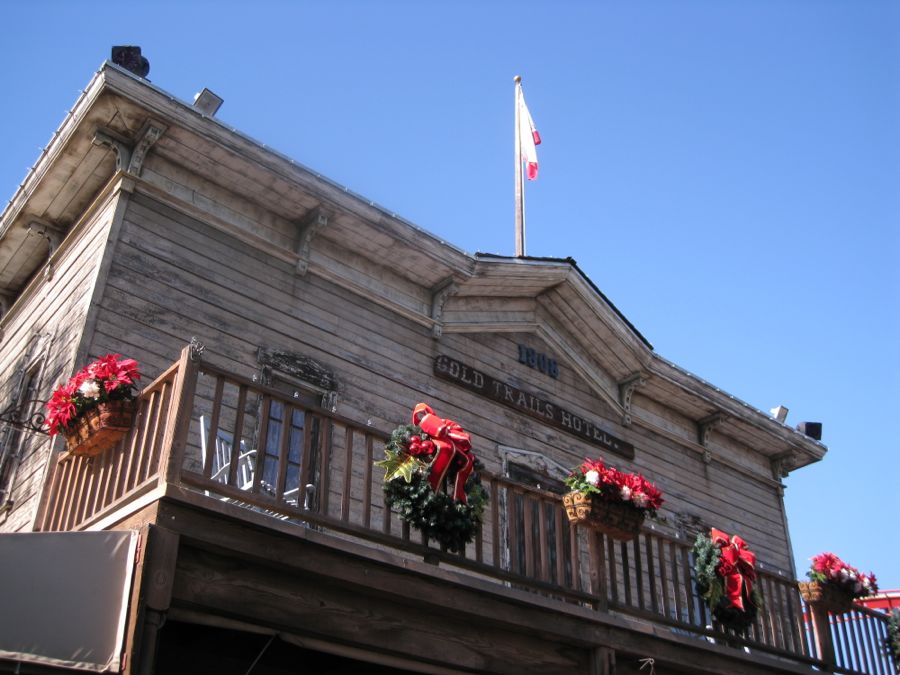
We headed for the restaurant before walking for a few hours
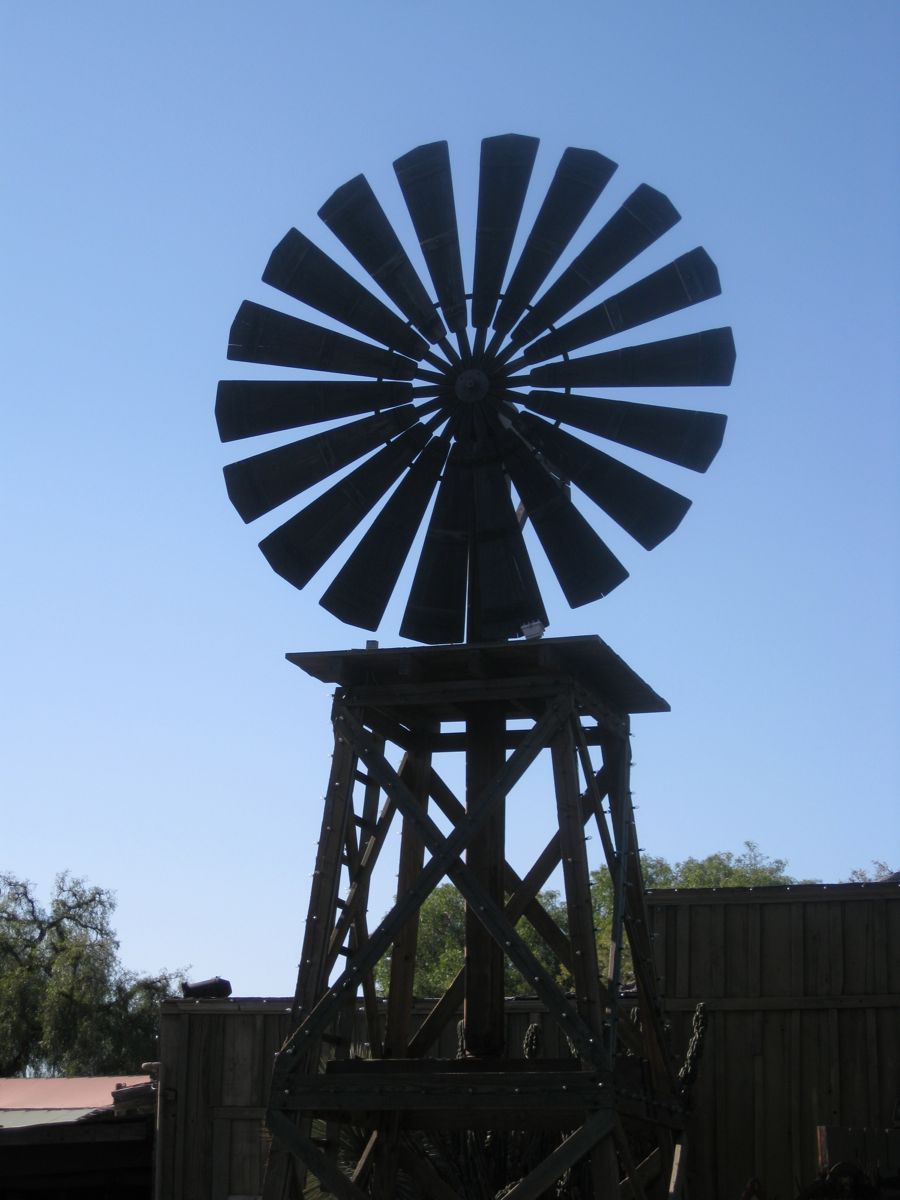
Reminded us of Old Ranch
We Visited The Birdcage Theater
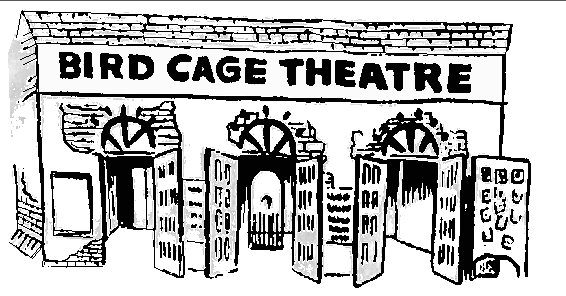
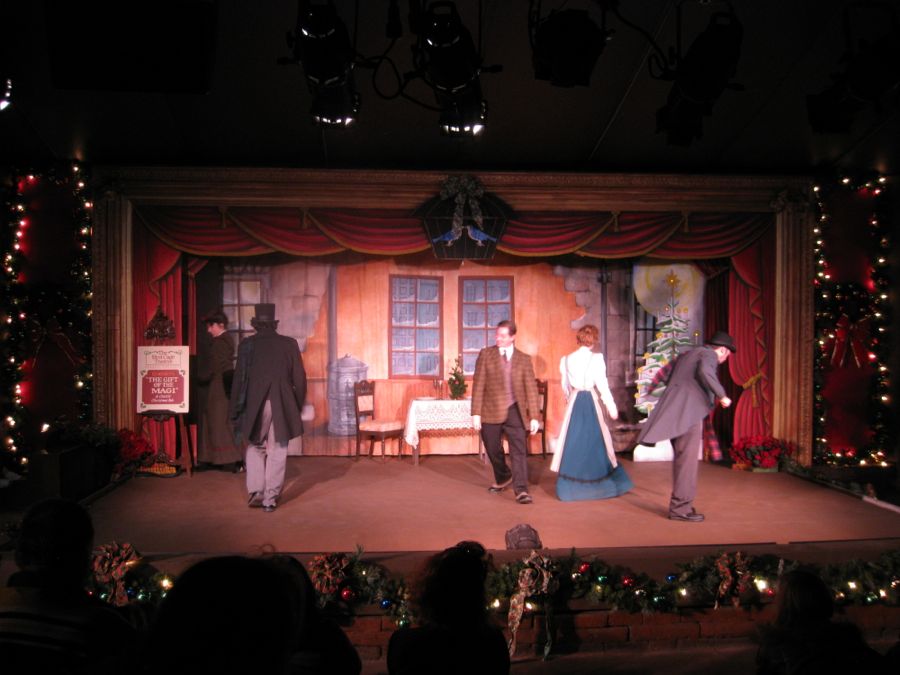
The Gift Of The Maji
Off To The Museum
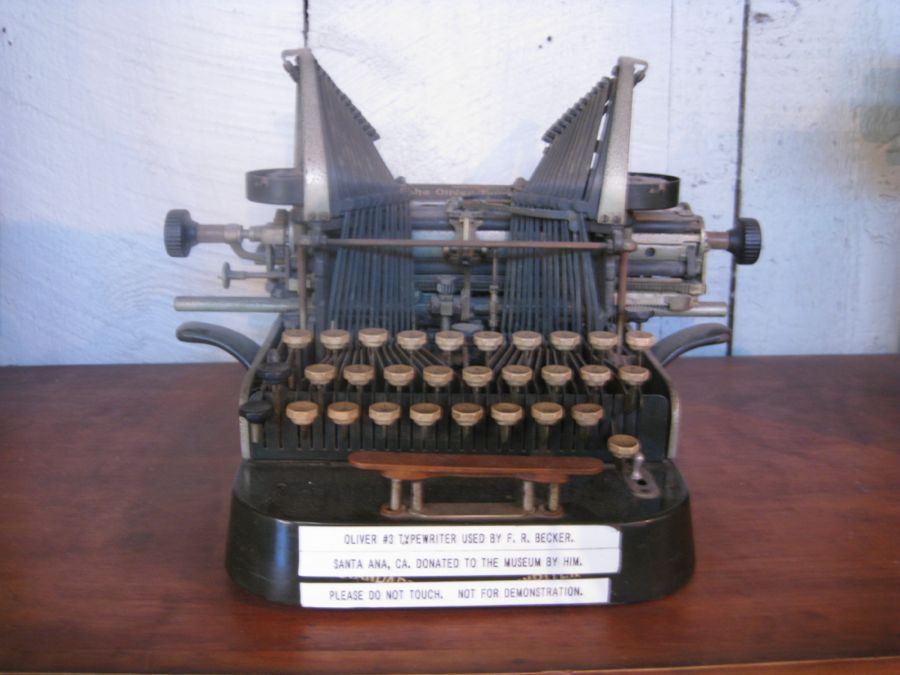
Oliver #3 Typewriter
Did You Know? - The Oliver Typewriter Company was an American typewriter manufacturer headquartered in Chicago, Illinois. The Oliver Typewriter was the first effective "visible print" typewriter, meaning text was visible to the typist as it was entered. Oliver typewriters were marketed heavily for home use, utilizing local distributors and sales on credit. Oliver produced more than one million machines between 1895 and 1928 and licensed its designs to several international firms.
Competitive pressure and financial troubles resulted in the company's liquidation in 1928. The company's assets were purchased by investors who formed The British Oliver Typewriter Company, which manufactured and licensed the machines until its own closure in the late 1950s. The last Oliver typewriter was produced in 1959. More...

This machine was produced at their factory in Chicago sometime between 1896–1901 (30,000 were produced)
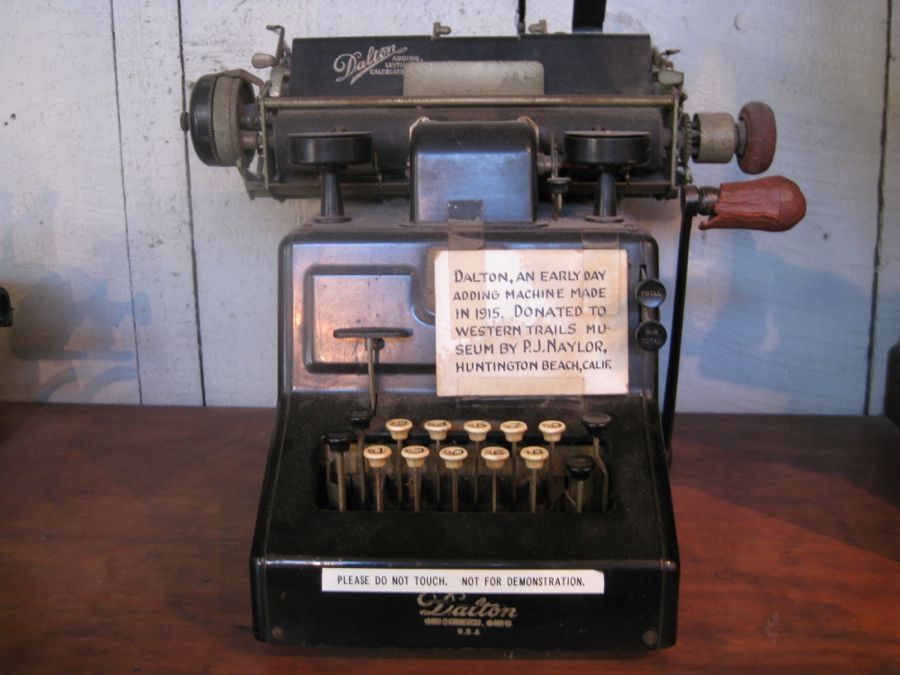
Early 1900's
Did You Know? - An accounting machine, or bookkeeping machine or recording-adder, was generally a calculator and printer combination tailored for a specific commercial activity such as billing, payroll, or ledger. Accounting machines were widespread from the early 1900s to 1980s, but were rendered obsolete by the availability of low-cost computers such as the IBM PC.
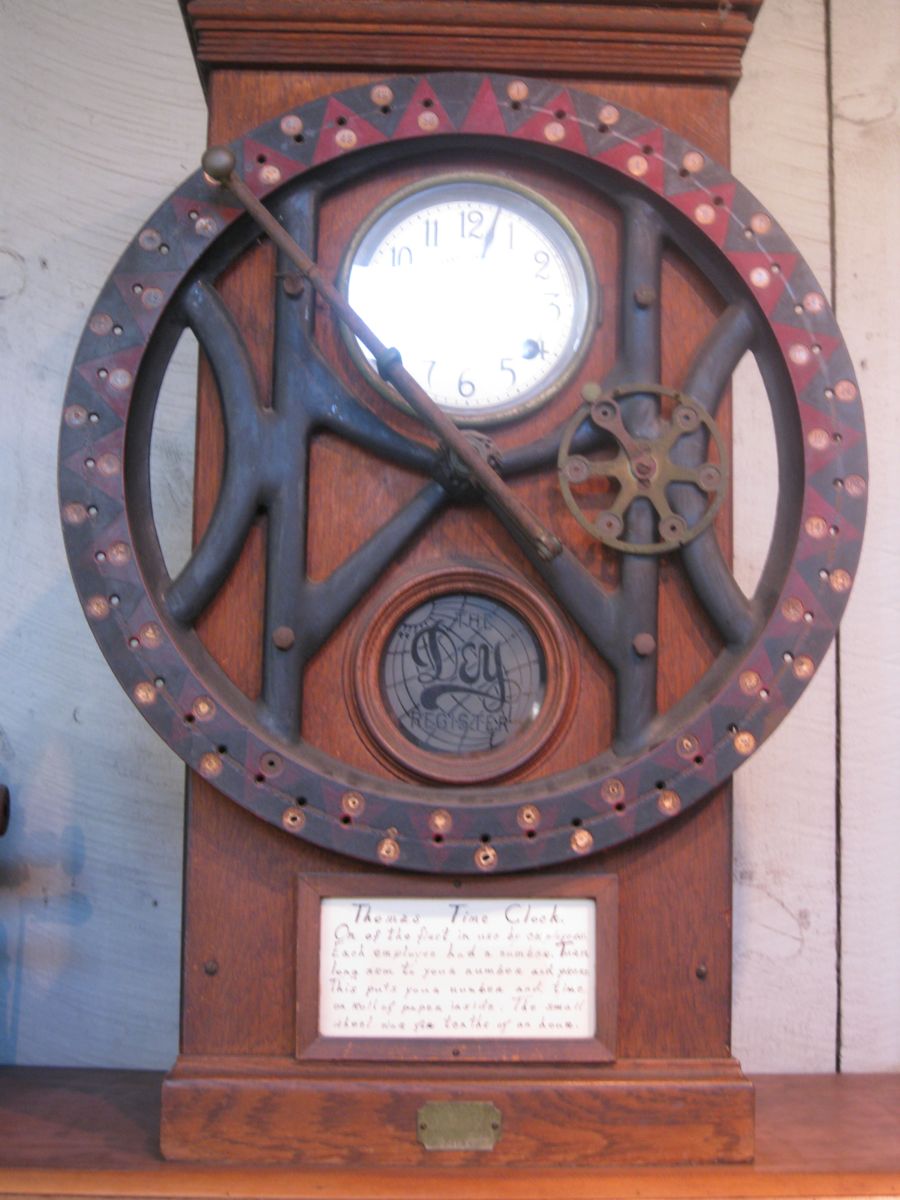
A time clock!
Each hole represents an individual and putting your hole on the lever and pulling it recorded the
time in/out on a paper tape
Did You Know? - A time clock, sometimes known as a clock card machine or punch clock or time recorder, is a mechanical (or electronic) timepiece used to assist in tracking the hours an employee of a company worked. In regards to mechanical time clocks this was accomplished by inserting a heavy paper card, called a timesheet, into a slot on the time clock. When the time card hit a contact at the rear of the slot, the machine would print day and time information on the card. This allowed a timekeeper to have an official record of the hours an employee worked to calculate and pay an employee. More...
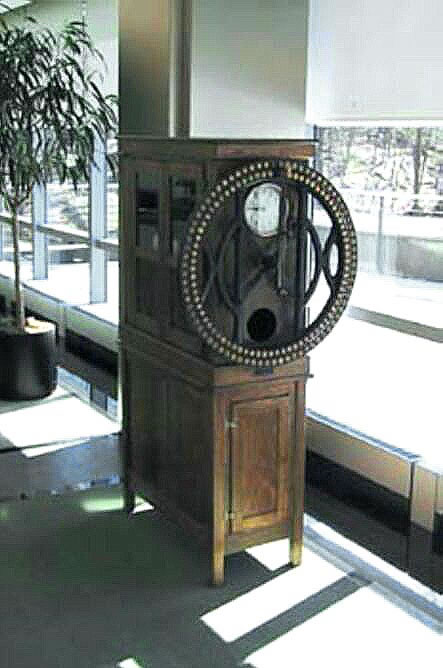
How it looked in an office or factory

This is how IBM got started
Did You Know? - The first time clock was invented on November 20, 1888, by Willard Bundy, a jeweler in Auburn, New York. A year later his brother, Harlow Bundy, organized the Bundy Manufacturing Company, and began mass producing time clocks. Bundy Manufacturing, along with two other time equipment businesses, was consolidated into the International Time Recording Company (ITR). In 1911, ITR and two other companies were merged, forming Computing Tabulating Recording Corporation (CTR), which would later change its name to IBM.

Hard to see but the violin inside the cabinet is played by a mechanical set of fingers and bow

This is a ribbon dispenser from old time general stores
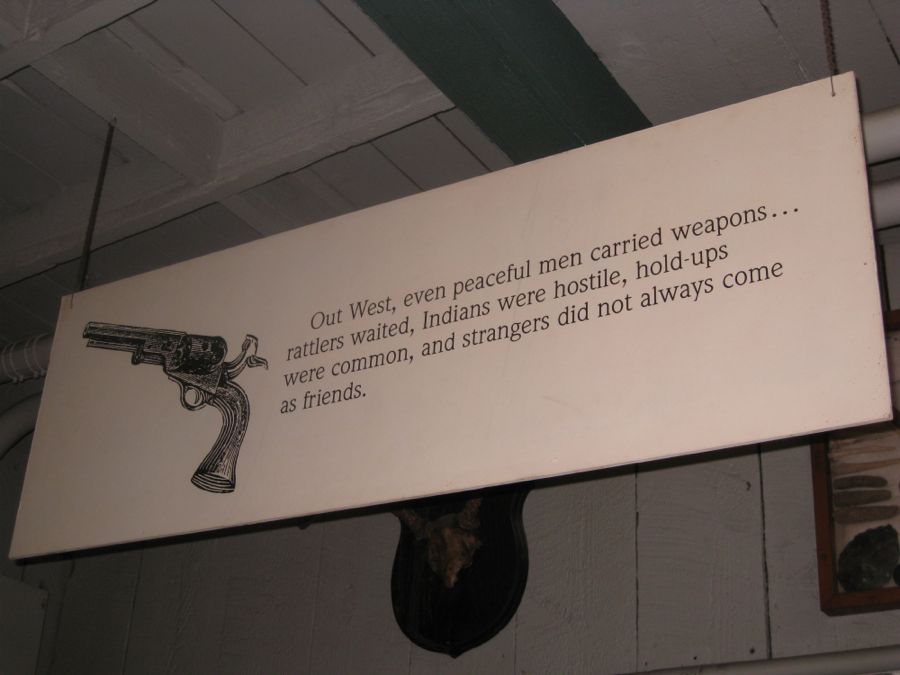
The time is coming again....
Back To The Bird Cage For Schrooge
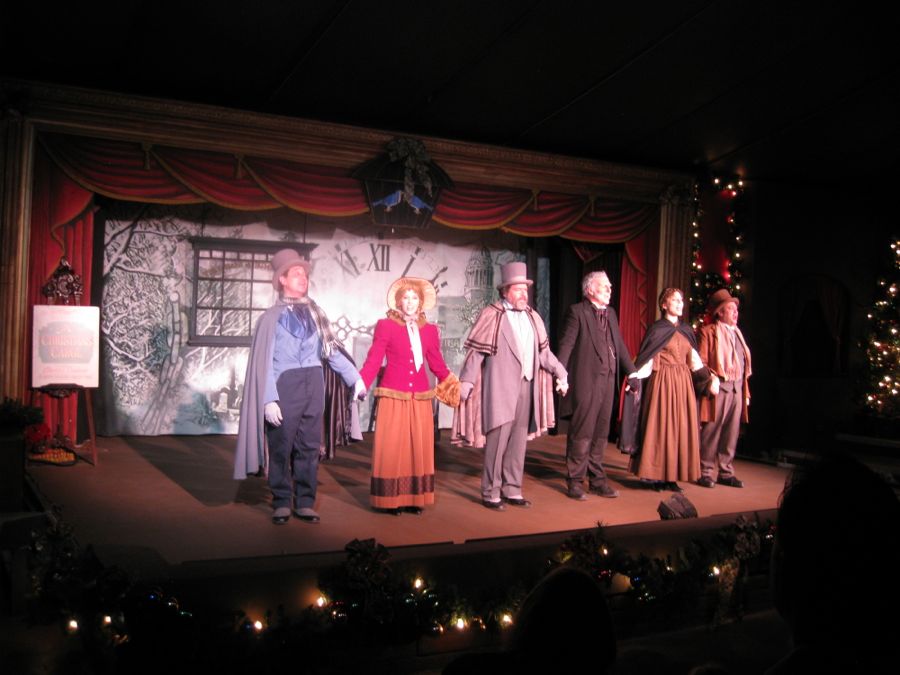

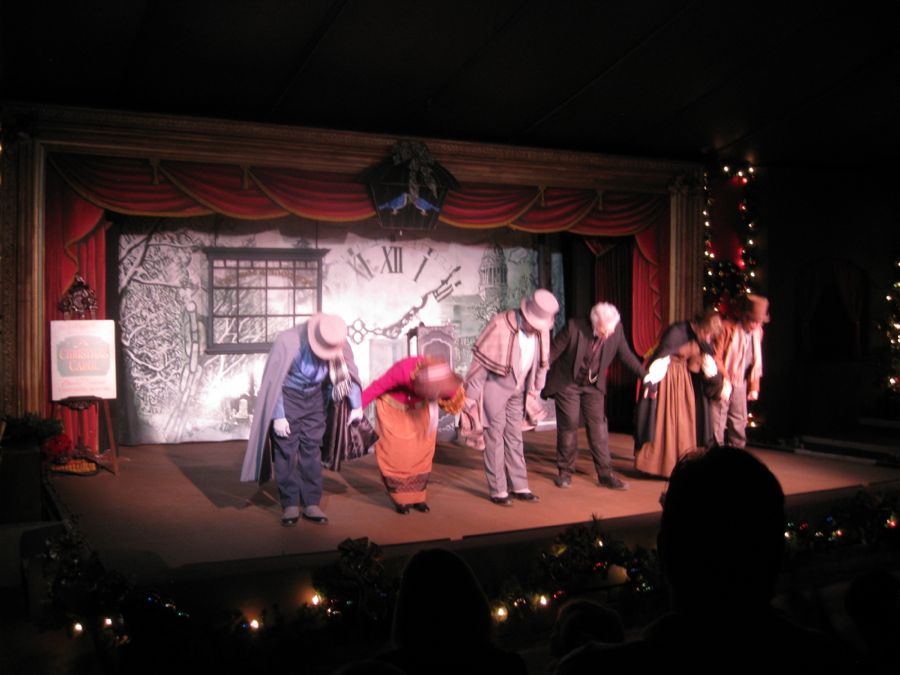
We Continue Exploring

The Pointsettia's were beautiful


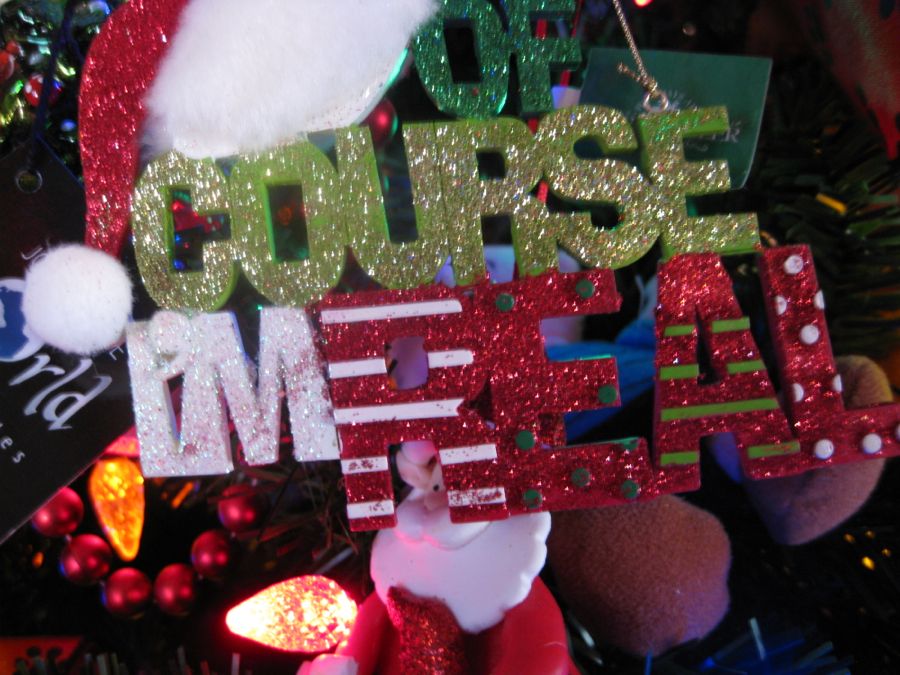
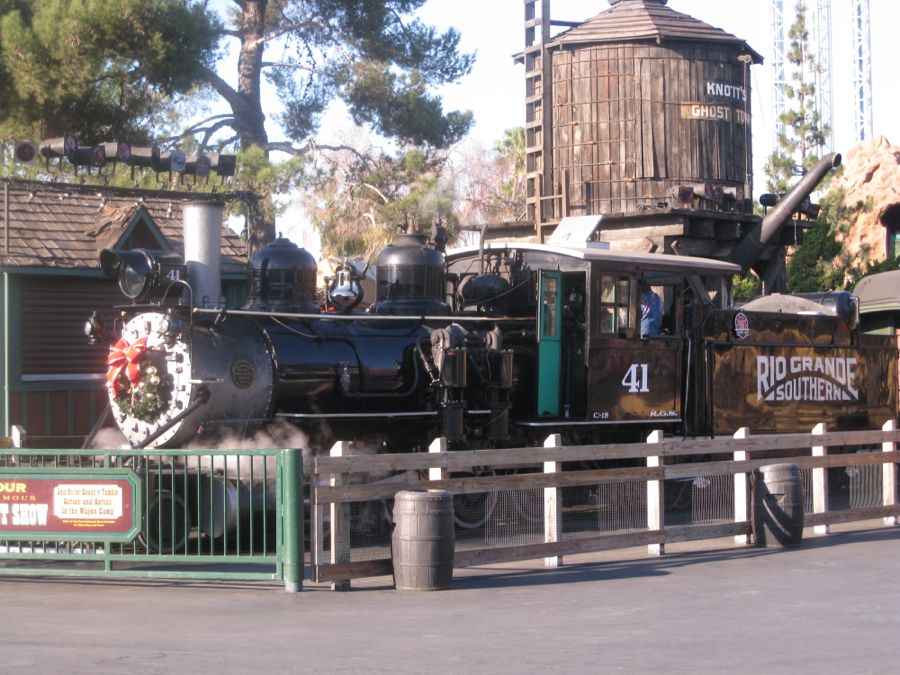


Heck of a tree topper
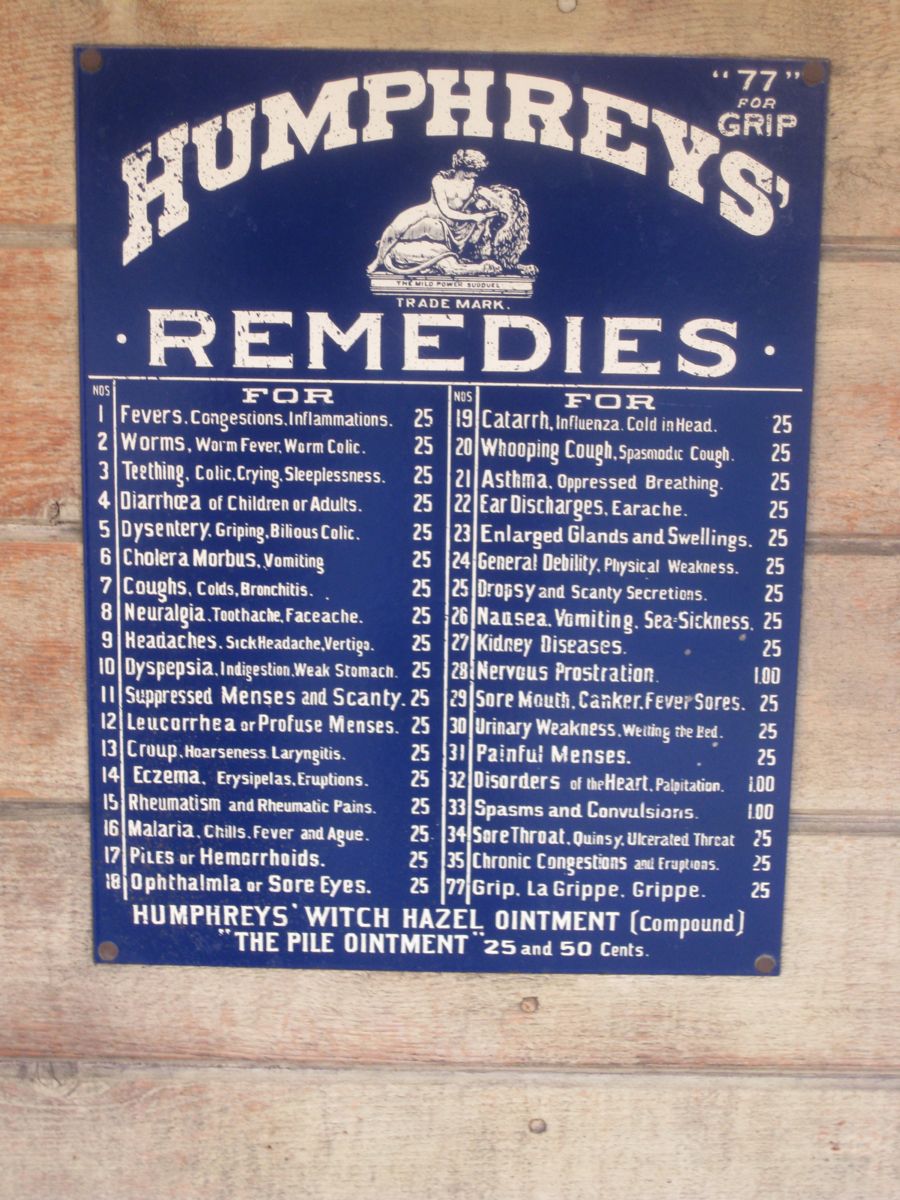
To the apothecary
Did You Know? - Apothecary (play /əˈpɒθɨkɛəri/) is a historical name for a medical professional who formulates and dispenses materia medica to physicians, surgeons and patients — a role now served by a pharmacist (or a chemist or dispensing chemist) and some caregivers.
In addition to pharmacy responsibilities, the apothecary offered general medical advice and a range of services that are now performed solely by other specialist practitioners, such as surgery and midwifery. Apothecaries often operated through a retail shop which, in addition to ingredients for medicines, sold tobacco and patent medicines.
In its investigation of herbal and chemical ingredients, the work of an apothecary may be regarded as a precursor of the modern sciences of chemistry and pharmacology, prior to the formulation of the scientific method.

Just us monkeying around
